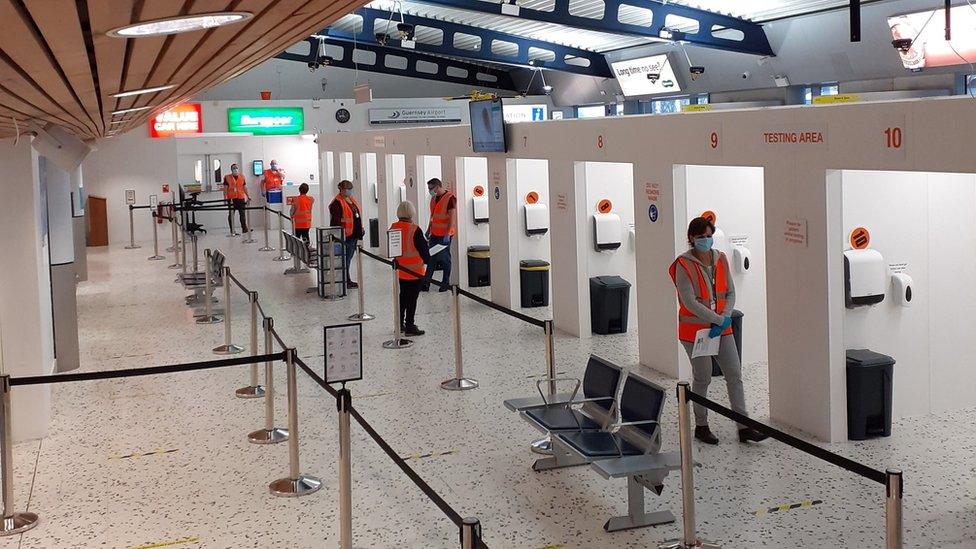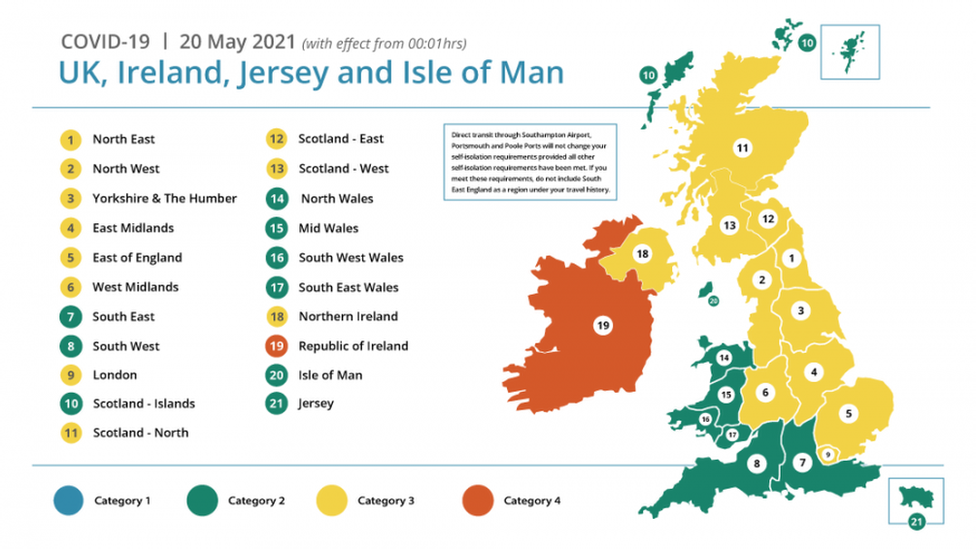Covid: Guernsey reduces self-isolation for arrivals from South East England
- Published

Following an error in data collection, 91 people from the South East will be released from self-isolation
People coming to Guernsey from South East England no longer need to self-isolate for a week, following a change to its Covid-19 travel classification.
The region, which does not include London, has been reclassified into category two of the four-tier system, external.
Category two areas require self-isolation until a negative test on arrival is received.
The adjustment follows an error in data collection from Public Health England (PHE).
As a result of the change, 91 people will be released from self-isolation ahead of schedule as the region should have been in the lower category from 14 March when the system was introduced, the States confirmed.
In category three, arrivals are required to self-isolate for a week and receive two negative tests.
Regions with a coronavirus rate of between 30 and 120 per 100,000 are placed in this category, which currently includes most of England, all of mainland Scotland and Northern Ireland.

Map of the travel categories of the British Isles areas according to 14 day Covid-19 infection rate
The South East joins Wales, South West England and the islands of Scotland in category two which means it has had a rate of below 30 per 100,000 people for seven consecutive days. .
Other Common Travel Area jurisdictions Jersey and the Isle of Man are also in the lower tier, while the Republic of Ireland in category four - with rates above 120 per 100,000 people.
The South East contains the main airport and ferry links to the island, with Southampton, Gatwick, Bournemouth and Poole in the region.
'Respond immediately'
The States use a 14-day rate for coronavirus infections in line with European Centre for Disease Control guidelines, rather than the seven day rate used by PHE.
The update to PHE data came about because positive lateral flow tests that were subsequently confirmed by PCR tests were counted as two new positive cases instead of one.
Director of Public Health Dr Nicola Brink said it was "unfortunate that this discrepancy in the data occurred" and her teams had "worked hard to contact those affected by the change".
She said: "It was important to respond immediately and try and ensure that people who shouldn't be in self-isolation were released and soon as possible."

Follow BBC Guernsey on Twitter, external and Facebook, external. Send your story ideas to channel.islands@bbc.co.uk, external.
Related topics
- Published14 May 2021
